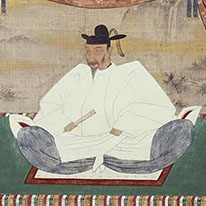Past Exhibitions
- Feature Exhibition: Olympia Meets Japanese Art
- June 5, 2021 - July 4, 2021
The Kyoto National Museum is pleased to present treasures from its collection to compare and contrast the ancient Olympics in Greece and religious folkways in Japan. The people of ancient Greece worshipped many gods and goddesses, and among the famous Panhellenic Games held to honor their deities, the most important and famous were the games held every four years at Olympia. Sacred ground to all Greeks, Olympia was a center of religious worship and the location of a magnificent temple to Zeus, lord of the heavens and almighty in the Greek pantheon. The athletes who competed at Olympia trained their minds and bodies to compete before these gods. The victors were feasted for days on end and gained the right to dedicate a statue of themselves on the temple grounds. In their home communities they were honored for the rest of their lives.
Like the ancient Greeks, Japanese since distant antiquity worshipped many deities, competed with each other in the presence of the divine, trained themselves mind and body, celebrated their victories, and feasted together with their gods.
This exhibit introduces art of Japan and East Asia that resonates with the stories and legends of the ancient Olympics, creating what we hope will be an opportunity to enjoy the arts of Asia while learning more about the world of ancient Greece.
9. Portraits of Victors
The fifth day of the Olympic Games focused on the closing ceremony. The winners in each competition were presented with olive wreath crowns. Sometimes the victors had statues of themselves carved and were allowed to donate them to the Temple of Zeus, where the beautiful musculature of strong bodies celebrated by the gods were captured in bronze or marble for posterity.
What events in Japan, meanwhile, would have occasioned the creation of portraits or statues? In those times before photography, surely images capturing the features of people of the day would have been a useful means of keeping records and passing on traditions. Schools of religion created portraits of the revered founders of their faith or their temples. Portraits of persons thought to harbor a grudge were prepared for ceremonies held to quell their anger. In Zen, priests presented formal chinsō portraits to disciples as a kind of diploma recognizing their mastery of the precepts. There were also portraits made by families for funeral services as well as figures of powerful leaders who were deified after their death.












